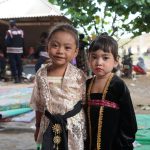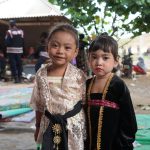Cultural identity is a multifaceted concept that encompasses the beliefs, values, customs, and practices that define a group of people. It is shaped by various factors, including ethnicity, nationality, language, and religion, and serves as a lens through which individuals perceive the world around them. At its core, cultural identity provides a sense of belonging and connection to a larger community, allowing individuals to navigate their social environments with a framework of shared experiences and collective memory.
This identity is not static; rather, it evolves over time as individuals encounter new experiences and influences, leading to a dynamic interplay between personal and collective identities. Understanding cultural identity is crucial in fostering empathy and respect among diverse groups, as it encourages individuals to appreciate the rich tapestry of human experience. Moreover, cultural identity plays a significant role in shaping an individual’s worldview and interactions with others.
It influences how people communicate, express emotions, and engage in social practices. For instance, cultural norms dictate acceptable behavior in various contexts, from familial relationships to professional settings. Recognizing these differences is essential for effective communication and collaboration in an increasingly globalized society.
As individuals navigate their cultural identities, they often find themselves at the intersection of multiple influences, leading to hybrid identities that reflect a blend of traditions and modernity. This complexity highlights the importance of understanding cultural identity not only as a personal journey but also as a collective responsibility to foster inclusivity and mutual respect in diverse communities.
Key Takeaways
- Cultural identity is shaped by a variety of factors including nationality, ethnicity, language, religion, and traditions.
- Navigating diversity in the workplace requires open-mindedness, empathy, and a willingness to learn from others.
- Celebrating cultural traditions fosters a sense of belonging and unity within a community.
- Overcoming stereotypes and biases involves challenging preconceived notions and embracing individual differences.
- Embracing multiculturalism in education enriches the learning experience and promotes understanding and respect for diverse perspectives.
Navigating Diversity in the Workplace
In today’s global economy, workplaces are becoming increasingly diverse, bringing together individuals from various cultural backgrounds, ethnicities, and experiences. Navigating this diversity requires a nuanced understanding of the unique perspectives that each employee brings to the table. Organizations that embrace diversity often find that it enhances creativity and innovation, as diverse teams are more likely to approach problems from different angles and generate a wider array of solutions.
However, this potential can only be realized if companies actively cultivate an inclusive environment where all voices are heard and valued. This involves not only implementing policies that promote diversity but also fostering a culture of respect and understanding among employees. To effectively navigate diversity in the workplace, organizations must prioritize training and development programs that educate employees about cultural competence.
Such initiatives can help individuals recognize their own biases and develop the skills necessary to engage with colleagues from different backgrounds. Additionally, creating platforms for open dialogue can facilitate discussions about cultural differences and encourage employees to share their experiences. By promoting an atmosphere of trust and collaboration, organizations can harness the strengths of their diverse workforce while mitigating potential conflicts that may arise from misunderstandings or miscommunications.
Ultimately, navigating diversity in the workplace is not merely about compliance with legal standards; it is about recognizing the inherent value of diverse perspectives and leveraging them to drive organizational success.
Celebrating Cultural Traditions

Cultural traditions serve as vital expressions of identity and community, providing individuals with a sense of continuity and belonging. Celebrating these traditions allows people to honor their heritage while sharing their unique customs with others. From festivals and rituals to culinary practices and art forms, cultural traditions enrich our lives by fostering connections among individuals and communities.
These celebrations often serve as opportunities for education, allowing participants to learn about different cultures and appreciate the diversity that exists within society. By engaging in cultural celebrations, individuals can break down barriers and build bridges across differences, promoting understanding and respect. Moreover, celebrating cultural traditions can have profound implications for community cohesion and social harmony.
When individuals come together to participate in cultural events—whether it be Diwali, Hanukkah, Lunar New Year, or Thanksgiving—they create shared experiences that transcend individual differences. These gatherings foster a sense of unity and collective identity, reinforcing the idea that diversity is not something to be feared but rather embraced. In an era marked by globalization and migration, celebrating cultural traditions becomes even more critical as it allows communities to maintain their unique identities while also integrating into broader societal frameworks.
By recognizing the importance of these celebrations, we can cultivate an environment where cultural diversity is not only acknowledged but celebrated as a vital component of our shared human experience.
Overcoming Stereotypes and Biases
| Metrics | Results |
|---|---|
| Percentage of individuals who have participated in diversity training | 75% |
| Number of reported incidents of discrimination or bias | 20 |
| Employee satisfaction with diversity and inclusion initiatives | 85% |
| Number of diversity and inclusion programs implemented | 10 |
Stereotypes and biases are pervasive challenges that can hinder social cohesion and perpetuate discrimination within society. These preconceived notions often arise from a lack of understanding or exposure to different cultures, leading individuals to make sweeping generalizations about entire groups based on limited information. Overcoming these stereotypes requires a concerted effort to challenge assumptions and engage in critical self-reflection.
Education plays a pivotal role in this process; by providing individuals with accurate information about different cultures and histories, we can dismantle harmful stereotypes that contribute to prejudice and discrimination. Furthermore, personal interactions are essential in overcoming biases. When individuals have the opportunity to engage with people from diverse backgrounds on a personal level, they are more likely to challenge their preconceived notions and develop empathy for others’ experiences.
Initiatives such as mentorship programs or community dialogues can facilitate these interactions, allowing individuals to share their stories and perspectives in meaningful ways. By fostering environments where open conversations about race, ethnicity, and culture can occur without fear of judgment, we can create pathways for understanding that transcend stereotypes. Ultimately, overcoming stereotypes and biases is not just an individual endeavor; it requires collective action to create inclusive spaces where diversity is celebrated rather than feared.
Embracing Multiculturalism in Education
Multiculturalism in education is an essential approach that recognizes the diverse backgrounds of students and seeks to create an inclusive learning environment for all. By incorporating multicultural perspectives into curricula, educators can provide students with a more comprehensive understanding of the world around them. This approach not only enriches students’ learning experiences but also fosters critical thinking skills as they engage with multiple viewpoints.
Embracing multiculturalism in education encourages students to appreciate diversity while developing a sense of global citizenship that prepares them for an interconnected world. Moreover, multicultural education promotes social justice by addressing issues of inequality and discrimination within educational systems. It challenges traditional narratives that often marginalize certain groups while elevating the voices of those who have been historically underrepresented.
By integrating diverse perspectives into classroom discussions and materials, educators can empower students to recognize their own identities while valuing the experiences of others. This inclusive approach not only enhances academic achievement but also cultivates empathy and respect among students from different backgrounds. Ultimately, embracing multiculturalism in education is about creating equitable opportunities for all learners while preparing them to thrive in a diverse society.
Building Inclusive Communities

Building inclusive communities is essential for fostering social cohesion and ensuring that all individuals feel valued and respected regardless of their background. An inclusive community actively seeks to engage its members by promoting participation in decision-making processes and encouraging collaboration among diverse groups. This involves creating spaces where individuals can share their experiences and perspectives openly without fear of discrimination or exclusion.
By prioritizing inclusivity, communities can harness the strengths of their diverse populations while addressing systemic barriers that may hinder participation. Furthermore, building inclusive communities requires ongoing commitment from both leaders and residents alike. Community organizations play a crucial role in facilitating initiatives that promote inclusivity through outreach programs, workshops, and events designed to celebrate diversity.
These efforts not only raise awareness about the importance of inclusion but also provide opportunities for individuals to connect with one another on a personal level. As community members engage in dialogue about their unique experiences, they can cultivate mutual understanding and respect that transcends differences. Ultimately, inclusive communities are built on the foundation of empathy, collaboration, and shared values—creating environments where everyone has the opportunity to thrive.
Preserving and Sharing Cultural Heritage
Preserving cultural heritage is vital for maintaining the richness of human history while ensuring that future generations have access to their roots. Cultural heritage encompasses tangible elements such as artifacts, architecture, and landscapes as well as intangible aspects like traditions, languages, and oral histories. Efforts to preserve this heritage often involve collaboration between communities, governments, and organizations dedicated to safeguarding these invaluable resources.
By documenting stories and practices passed down through generations, we can create a living archive that honors our past while informing our present. Sharing cultural heritage is equally important as it fosters appreciation for diversity within society. Through festivals, exhibitions, workshops, and educational programs, communities can showcase their unique traditions while inviting others to participate in their celebrations.
This exchange not only enriches the cultural landscape but also promotes dialogue among different groups—encouraging mutual respect and understanding. In an increasingly globalized world where cultures often intersect and influence one another, preserving and sharing cultural heritage becomes a powerful tool for building bridges across divides. By valuing our shared histories while celebrating our differences, we can create a more harmonious society that honors the richness of human experience.
If you’re exploring the topic of cultural identity and its implications, you might find it useful to understand how personal data related to cultural preferences is handled online. A relevant resource to consider is the privacy policy of websites, which outlines how personal information is collected, used, and protected. For a detailed explanation, you can refer to the privacy policy of a specific site, such as APEAI’s Privacy Policy, which may provide insights into how data related to cultural identity is managed and safeguarded.
FAQs
What is cultural identity?
Cultural identity refers to the feeling of belonging to a particular culture or group, and the ways in which this shapes an individual’s sense of self and their place in the world.
How is cultural identity formed?
Cultural identity is formed through a combination of factors including language, customs, traditions, beliefs, and values that are passed down from generation to generation within a particular community or group.
Why is cultural identity important?
Cultural identity is important as it helps individuals to understand who they are, where they come from, and how they relate to others. It also plays a significant role in shaping one’s worldview and influencing their behaviors and interactions with others.
How does cultural identity impact society?
Cultural identity impacts society by contributing to the diversity and richness of different communities, and by influencing social norms, traditions, and values within a given society.
Can cultural identity change over time?
Cultural identity can change over time as individuals may be influenced by new experiences, exposure to different cultures, or changes within their own community. This can lead to a shift in their sense of cultural belonging and identity.









